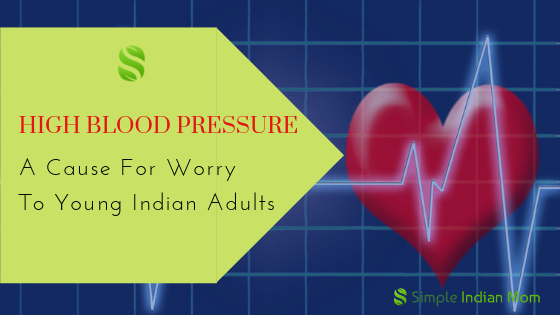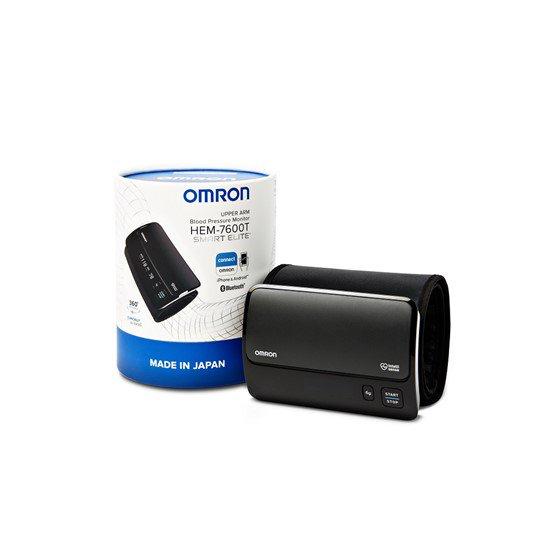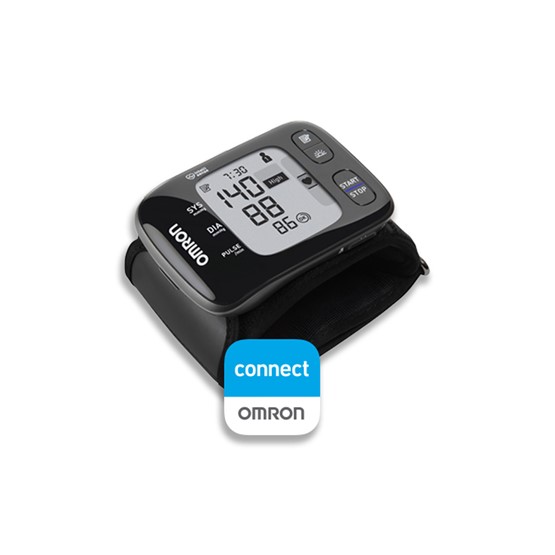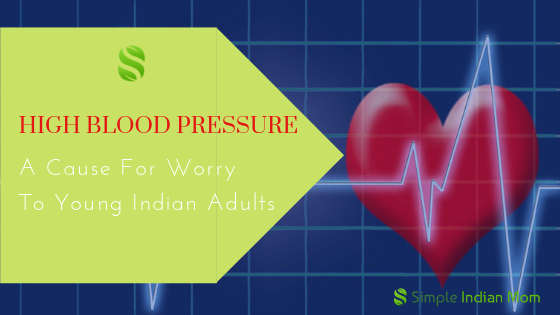
One in five young adults in India has high blood pressure!
Well, that’s quite an alarming information, right? Recent research conducted in India ( November 2018) has revealed this fact. If you were to take the exact numbers, a population to the tune of 80 million young Indian adults is suffering from high blood pressure.
Oops! 80 million is a population that is more than the total population of UK!!
High Blood Pressure In India – Becoming a Major Cause For Worry
High blood pressure is one of the most common lifestyle diseases India is facing today. Although there have been records of hypertension or high blood pressure rising in India, the recent concern is the reduction in the age groups that are becoming victims of Hypertension.
Earlier high blood pressure was mostly related to people who were above 50 years of age, however, the study conducted by some eminent doctors like Dr. Karthik Gupta of AIIMs clearly reports that high blood pressure is affecting Indians at a younger age than the western populations. In fact, people of age 20 and above have come under the high blood pressure scanner mainly due to lifestyle and eating habits.
About 40% of the country is within the age group of 20 and 40 years, and high blood pressure seems to be befalling among them like an endemic disease. This sure is a cause for worry.
Normal Blood Pressure Vs High Blood Pressure
So, how much should the scale read if you have normal blood pressure?
You need to first understand two numbers that create the blood pressure reading which is a fraction e.g., 120/80 mm Hg
- Systolic Pressure: the numerator in the above fraction or the number on the top indicates the pressure in arteries when the heart is beating or pumping blood.
- Diastolic Pressure: This is the denominator or the number in the bottom indicating the pressure in arteries between two heartbeats that is when the heart is relaxing
Basically, we can categorize blood pressure reading into five categories
-
Normal or Healthy Blood Pressure
120/80 mm Hg is considered the normal blood pressure of humans; this can vary from person to person. If you are not hypertensive yet, it would be helpful to find your normal blood pressure and keep a log of it.
-
Elevated Blood Pressure
A systolic reading of 120 to 129 mm Hg and diastolic of less than 80 mm Hg is usually not considered as high blood pressure. This may arise due to overworking, less sleep or stress. Such elevated blood pressure may be easily reduced with lifestyle changes.
-
Stage 1 High Blood Pressure (Pre-Hypertension)
130 to 139 mm Hg systolic numbers and 80 to 89 mm Hg diastolic numbers is Stage 1 hypertension. Making lifestyle modifications with regular monitoring of BP can help patients to get back to a normal level.
-
Stage 2 High Blood Pressure
systolic number 140 mm Hg and above and diastolic number 90 mm Hg and above is the Stage 2 High Blood Pressure. This needs to be closely monitored and medication should be taken. Make sure to monitor and record your weekly and monthly average reading so that you are able to take the right medication (to be prescribed by your doc).
-
Stage 3 High Blood Pressure
The systolic number above 180 mmHg and the diastolic number over 120 mm Hg is a critical reading. It is dangerous to have such high blood pressures indicating the need for immediate medical intervention along with regular BP monitoring.
Symptoms of High Blood Pressure
Symptoms of high blood pressure might not be evident, but when a person is hypertensive for a long time, headaches, shortness of breath, nosebleeds, flushing, dizziness, chest pain, changes in the vision, blood in the urine, etc. can be observed.
High blood pressure leads to
- Heart Conditions
- Heart Attacks or Strokes
- Damage to Blood Vessels And Organs
- Kidney dysfunction
- Aneurysms
- Vision loss
- Metabolic syndrome
- Memory problems
How to Keep Your Blood Pressure Under Control
You should now have understood the seriousness of high blood pressure and how it affects your complete health. Hence it is important to keep blood pressure within normal range. You can do this by following a healthy lifestyle as shown below:
- Have a healthy diet
Try to have a heart-healthy diet to keep high blood pressure under control. Lean proteins, fresh vegetables, and green leafy vegetables, fruits, less sugar, and drinking lots of water is important.
- Physical Activity
Increase your physical activity so that your calories are burnt and your cells are rejuvenated at right intervals. Physical activity also makes sure that your muscles tone well and fat deposition is not encouraged.
- Sleep well
A good night’s sleep is very important for maintaining the hormonal balance of your body. Hormones play an important role in keeping your physical and mental health sound.
- Maintain a Log of Your Blood Pressure
After 30 years of age, it is advisable to take regular blood pressure readings and maintaining a log so that you would know what your normal blood pressure is and to monitor any kind of fluctuation that may arise.
High Blood Pressure during Pregnancy
High Blood Pressure is during pregnancy is surely a concern. Pregnant women with high blood pressure can deliver healthy babies, however, the blood pressure needs to be monitored regularly and managed closely throughout the pregnancy period.
Pregnancy lowers the normal resistance in the body of women and hence if left unattended, high blood pressure may injure the kidneys faster than in normal women. High blood pressure also leads to low baby weight or premature birth of the child.
Damage to the liver functions, fluid in lungs and visual problems may also happen during pregnancy due to high blood pressure. Hence regular monitoring of blood pressure on a weekly basis for pregnant women is very important.
How to Maintain a Log of Your Blood Pressure
Monitoring your blood pressure regularly on a weekly, monthly and yearly is very important, for this, you can choose to
- Measure your Blood Pressure at home with easy to use Digital BP Monitors
- Visit your physician regularly
Visiting your physician to take blood pressure reading regularly is required to keep a log of your blood pressure. However, visiting weekly and waiting for your turn for just checking of blood pressure is sometimes tedious that most often people miss out on maintaining the log.
Another problem with visiting the physician is that you would not be able to go at the same time, which is obligatory. You also travel, walk or climb stairs and so on which may increase your blood pressure due to physical activity. Again, there is the white coat hypertension to be considered.
White Coat Hypertension
Some people become apprehensive when they visit the physician, mostly due to fear of being diagnosed with some health issues. This makes their blood pressure to rise momentarily. Such conditions may lead to misdiagnosing and one might be put on medication unnecessarily.
Home Monitoring of Blood Pressure
Home monitoring of blood pressure has become very easy and a more sought after option everyone is choosing. In fact with the blood pressure home monitoring devices such as those introduced by Omron Healthcare India one can monitor blood pressure without any discomfort and on a regular basis with the right precautions.
Omron Healthcare is the pioneer, globally, in manufacturing digital blood pressure monitors since 1978. With four decades of experience, Omron Blood pressure monitors come with top-notch advanced sensing technology and are thoroughly user-friendly.
They have three types of blood pressure monitors
- The Upper Arm Blood Pressure Monitor – you can use the cuff on the upper arm and take a reading of your blood pressure as directed. The newer versions have the wireless Bluetooth connecting ability.

- The Wrist Blood Pressure Monitor – these are the ones where you can use the cuff on the wrist. The latest version has Bluetooth connectivity and an app Omron Connect in the google play store that can be downloaded on your phone – both android and IOS versions of the app are available.

With the app you do not have to note down your blood pressure reading, it is directly saved on your phone with a graphical representation of the increase and decrease in blood pressure. The app also enables you to share the blood pressure reading through mail or WhatsApp to your physician or other family members instantly.
The app can save records of your blood pressure for 12 months (that is a year!) with date and time when the reading was taken – that sure is something I would look for.
Home Monitoring Your Blood Pressure – The Do’s and Dont’s
Most often people have this misunderstanding that digital blood pressure monitors do not give a consistent reading and they differ with each reading.
This is actually not the problem with the home blood pressure monitors, but the lack of awareness about the right way to take the readings. Here are some Do’s and Dont’s while taking blood pressure readings at home using digital blood pressure monitors
Do’s
- Take readings at a consistent time – the blood pressure should be taken at a consistent time, such as early mornings or evenings, choose a one-time slot to take the readings. Recommended time is one hour after getting up or one hour before going to sleep.
- Sit in the right position – sit erect, with your back rested and comfortable. This will relax your body and will give the right reading.
- Place the cuff correctly – the arrows on the cuffs need to be placed correctly on the left hand as directed in the instruction manual. Incorrect positioning may lead to error in the readings.
Don’t’s
- Don’t take a reading after doing any physical activity – the blood pressure would naturally be high
- Do not take readings immediately after taking food, caffeine, smoking or taking tobacco in any form – an increase in blood pressure is expected.
- Do not take blood pressure reading after taking bath – a reduction might be possible.
- Lastly, do not move or talk while the monitoring is on. The right placement of the cuff is also very important.


